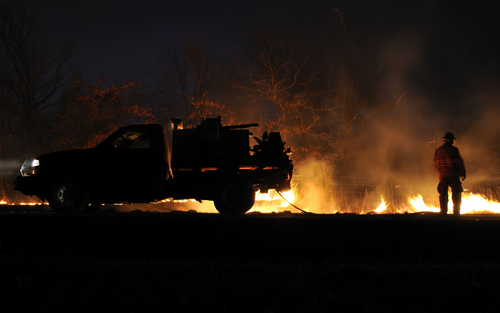Worker Safety During Wildfire Cleanup
The dangers of a wildfire don’t end once it’s extinguished. Cleaning up after a natural disaster is dangerous, and cleanup workers need to be prepared for any hazards they might encounter: you don’t want to make recovery longer or harder by getting seriously hurt. In addition to having the proper wildfire personal protective equipment, follow these safety tips to avoid the potential hazards of post-wildfire cleanup.
Electrical Hazards
Once a wildfire has died down, power lines might get re-energized and equipment turned on, which means a risk of serious electrical injuries, especially around water. Only professionals should work with downed power lines: everyone else should focus on avoiding hazards. Assume that all lines are energized, avoid areas with thick smoke, and never use electrical equipment until it’s inspected and qualified. Use appropriate PPE and protective tools, like Nomex clothing rated with the NFPA standard 1500, rubber gloves, dielectric overshoes, and insulated sticks and cable cutters.
Hazardous Atmospheres, Materials, and Conditions
Cleaning up involves equipment powered by gasoline or diesel, which can create deadly carbon monoxide fumes—never use this equipment indoors or in confined spaces. Never enter a confined space without proper training and equipment, and contact the fire department if you need help. Don’t assume that anything damaged by fire is stable—don’t work around fire-damaged structures until they’re certified safe, and leave immediately if anything shifts or makes noise. Also, make sure you have fire protection gear to prevent burn injuries and smoke inhalation.
Your worksite might have damaged containers or equipment with hazardous chemicals. Don’t move them without contacting the fire department or hazardous materials team, wear protective equipment in contaminated areas, and frequently and thoroughly wash any skin that could have touched chemicals.
Extreme Temperatures
When it’s hot, heat stroke, heat exhaustion, heat cramps, and fainting are all risks. Drink a glass of water every 15 to 20 minutes and at least a gallon a day to stay hydrated. Wear loose-fitting, light-colored clothing and work when it’s cooler if possible, or distribute the work evenly throughout the day. If you start to feel unwell, get somewhere cool, lie or sit down, drink water, and wash your face with cool water. If you don’t recover, get medical help.
If it’s cold, avoid hypothermia. Wear high rubber boots in water, make sure your clothing and boots are properly insulated, don’t work alone, take frequent breaks out of the water, and get into dry clothing when you can.
Fire Risks
Even in burned areas, fire can still be a hazard. Any smoldering wood or debris can ignite again, and contact with flammable materials or oxygen can ignite other materials. Bring at least two fire extinguishers with a UL rating of at least 10A to every cleanup job.
Fatigue and Injuries
Long hours, tough work, hazardous conditions, and the emotional toll can make cleanup work harder and more dangerous. Workers can develop stress, strain, and other injuries. Use teams of two or more when moving large objects, and when lifting anything weighing 50+ pounds per person use an automated lifting device. Pace yourself, take frequent breaks and make sure you’re getting enough sleep. Ensure that you’re getting the support you need in the form of disaster relief programs, emotional support from loved ones, and mental health care.
Fire Protection Gear from PK Safety
PK Safety has been protecting workers and DIYers for over 70 years. No matter what you’re working on, we want to ensure that you’re properly equipped for a job done well and safely, which means proper wildfire personal protective equipment, fire protection gear, and respirators. If you have any wildfire cleanup safety questions or want to know more about the equipment we carry, you can contact one of our safety experts online or call 800.829.9580.
Recent Posts
-
Customizing Gas Detectors: Tailoring Solutions to Fit Your Unique Requirements
In today’s diverse industrial landscape, a one-size-fits-all approach to safety simply doesn’t cu …Jul 3rd 2024 -
10 Ways to Prevent Wildfires
You can prevent wildfires by extinguishing flames before you leave the worksite. Avoid practicing …Jul 1st 2024 -
ANSI/ISEA 138 Safety Gloves: Ensuring Hand Protection
The human hand is an anatomical masterpiece and arguably the greatest tool attached to our bodies …Jun 25th 2024





